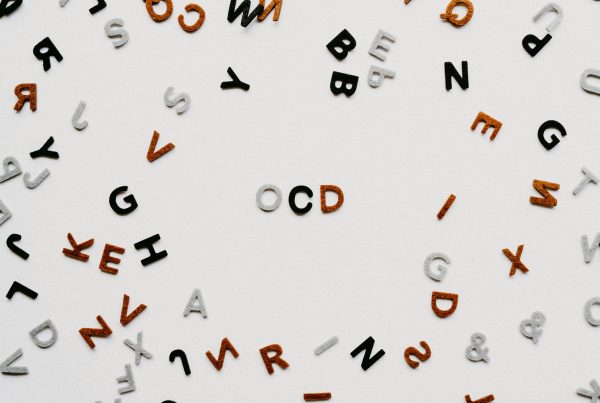Attention Deficit Hyperactivity Disorder (ADHD) in Adults
Attention Deficit Hyperactivity Disorder, or ADHD is a neurodevelopmental disorder that is characterized by imparied development of the brain and central nervous system. The most common age of development is before a child begins grade school and can persist through the course of their lives. The diagnostic statistical manual-5 (DSM-5) lists several disorders in the category of neurodevelopmental disorders, including:
- Intellectual disability
- Communication disorders
- Language, speech, and social communication impairments; childhood-onset fluency disorder (stuttering)
- Autism Spectrum Disorder
- Attention-Deficit/Hyperactivity Disorder
- Motor Disorders
- Tic disorders, developmental coordination disorder, stereotypic movement disorder
- Specific Learning Disorder
- Reading, writing, and/or math
ADHD affects approximately 4 – 5% of adults and men are three times as likely to receive a diagnosis compared to females. Why? There are several possibilities — symptom presentation, with men being more likely to display more noticeable hyperactivity/impulsivity symptoms and females more likely to display less noticeable inattentive symptoms. Or, genetic susceptibility being stronger in men than females, or possibly as a function of females presenting with more complex diagnoses that often include autism, depression, anxiety, and other developmental disorders, alongside ADHD.
ADHD: Diagnostic Description
ADHD can be seen as an iceberg — most people tend to think ADHD is just trouble focusing and fidgeting. While that may be true, those are not the only symptoms one may experience. An individual with ADHD can experience, but is not limited to, any of the following:
- Forgetting to eat, sleep, or even go to the bathroom
- Sleeping problems
- Forgetting thoughts 0.2 seconds after having them
- Depression
- Difficulty maintaining relationships
- Mood swings
- Hyperfixation
- Sensory processing disorder
- Poor sense of time
….and many more! ADHD is a complex diagnosis that can appear as many things. The essential feature of ADHD is the presence of either inattention and/or hyperactivity/impulsivity. Only five symptoms in either category must be present for a diagnosis in adulthood.
Inattention must include 5 or more of the following:
- Fails to attend to details
- Has difficulty sustaining attention
- Does not seem to listen
- Fails to finish
- Has difficulty organizing tasks
- Avoids sustained effort
- Loses things
- Is distracted by extraneous stimuli
- Is forgetful
Hyperactivity/Impulsivity must include 5 or more of the following:
- Blurts out answers
- Difficulty awaiting turn
- Interrupts or intrudes
- Talks excessively
- Fidgets with hands or feet
- Leaves seat in classroom
- Runs about or climbs
- Difficulty lying quietly
- Motor excess
In addition to the following categories, for a diagnosis in adults, you need to be able to recall or produce evidence of symptoms occurring at an earlier age — typically prior to the age of 12. They must be present for at least six months and impairment must be present in at least two settings (i.e., home and work).
There are three subtypes of ADHD that can occur: Predominantly Inattentive, Predominantly Hyperactive/impulsive and Combined. The unique symptoms experienced will determine which type of ADHD is present.
Predominantly Inattentive ADHD
An individual with inattentive ADHD is more likely to experience symptoms of inattention rather than impulsivity and hyperactivity. Though nearly everyone can experience inattentiveness from time to time, people with inattentive ADHD may experience symptoms that intrude and interfere with their quality of life and daily functioning. According to the American Psychiatric Association’s diagnostic criteria, there are nine symptoms associated with adults:
- Trouble staying focused on tasks at work or home
- Does not pay close attention to details or makes careless mistakes
- Trouble with organizing tasks or activities (e.g., often misses deadlines)
- Easily distracted
- Does not follow through on instructions or fails to complete other activities and tasks
- Forgets to do routine chores (e.g., paying the bills or keeping appointments)
- Avoids tasks that consist of long periods of mental focus
- Often losing items
- Appears not to be listening
It is also important to note that females are more likely to be diagnosed with inattentive type ADHD than males — this is also often undiagnosed in females and less likely to receive appropriate treatment.
Predominantly Hyperactive/Impulsive ADHD
As mentioned, this type of ADHD is primarily characterized by symptoms of impulsivity and hyperactivity. These can include any of the following:
- Fidgeting or tapping of the hands and feet
- Often leaves seat in the workplace
- Constantly feels restless
- Trouble playing or engaging in leisure activities quietly
- Always seems “on the go”
- Talks excessively
- Finishing sentences for others who are talking
- Trouble waiting for their turn
- Interrupts or intrudes in others’ conversations
Additionally, combined presentation ADHD is characterized by both hyperactivity, impulsivity, in addition to inattention. This diagnosis differs in that one set of symptoms do not predominate the other. An individual can be diagnosed with this subtype if they experience five or more symptoms of hyperactivity/impulsivity, and at least five or more symptoms of inattention and have been present for at least six months. This diagnosis is also twice as prevalent in men than women.
Anxiety vs ADHD: Which is it?
Becaused ADHD and anxiety often manifest similar symptoms of inattention, it is important to note the distinctions between the two. Anxiety is a normal emotional response to distressing situations, but problems occur when the anxiety or fear becomes excessive, irrational, or out of proportion. Anxiety can present in physical and psychological symptoms, including some of the following:
- Easily fatigued
- Muscle tension
- Teeth grinding
- Headaches
- Clinging behavior
- Difficulty concentrating
- Avoiding social situations
Likewise, ADHD can have physical and psychological symptoms similar to anxiety, causing individuals to experience diminished cognitive functioning. The ultimate difference narrows down to whether or not the individual is not focused due to apprehensive thoughts, or because of being easily distracted with a calm mind.
What causes ADHD?
As implied by the “neurodevelopmental disorders” category, ADHD is characterized by a strong biological component. It has been recognized that a single cause is insufficient to to explain why an individual does or does not develop ADHD. However, research has attempted to identify factors that may predispose someone to ADHD.
- Genetics: ADHD is highly heritable — approximately 75 – 80% of symptoms can be attributable to genetic factors, though no single gene is responsible for ADHD. Multiple genes, each with small effects, along with interactions between genes and environment all contribute.
- Brain Structure and Function: According to research, the brain structure among individuals with ADHD appears slightly smaller compared to those without. Specifically, areas of the brain associated with executive functioning, attention, impulse control, and motor activity appear to be impaired.
- Neurotransmitters: Strong evidence supports that many neurotransmitters — dopamine, norepinephrine, serotonin, glutamate, GABA — all appear to play different roles in allowing parts of the brain to communicate with each other; specifically different forms of dopamine receptors and transporter genes.
- Early environmental risk factors: Environmental risk factors appear to disrupt early development; maternal substance use, maternal stress, low birth weight, and malnutrition.
- Psychological factors: While not a cause of ADHD, symptoms of ADHD may lead to negative feedback from others and difficulties succeeding in school and other desired goals which can further exacerbate symptoms and lead to other comorbidities.
ADHD treatment
Medications are often the first-line of treatment for individuals with ADHD. There are two broad categories of medication options: Stimulant and Non-stimulant medications. But treatment can also include therapies such as behavioral therapy (e.g., learning how to monitor and manage your behavior) and psychotherapy (i.e., talk therapy).
Stimulant medications, first-line treatment, are often prescribed in low doses which appear to increase neurological activity in the prefrontal cortex and in result increases attention and decreases impulsivity. With stimulant medications, effects are generally felt quickly and processed from the body quickly. However, common side effects can include: appetite and growth suppression, insomnia, drowsiness, and irritability. Common brands of stimulant medications include Ritalin, Adderall, Focalin, and Vyvanse.
Non-stimulant medications, second-line treatment, are prescribed for those whose stimulant medications are not effective or for those who have significant side effects from stimulant medications. These tend to take longer to become effective. Most often selective serotonin-norepinephrine reuptake inhibitors (SNRIs) are prescribed as well as some other forms of antidepressants and some blood pressure medications. Common brands include: Strattera, imipramine, or clonidine.
Psychotherapy for ADHD is largely behavioral. It involves educating parents, teachers, and the person with ADHD about how to set up the environment to adapt to the person’s needs. For example, Parent-Management Training involves reinforcement, extinguishing undesirable behaviors, and providing immediate, consistent, and powerful consequences to the behavior.







